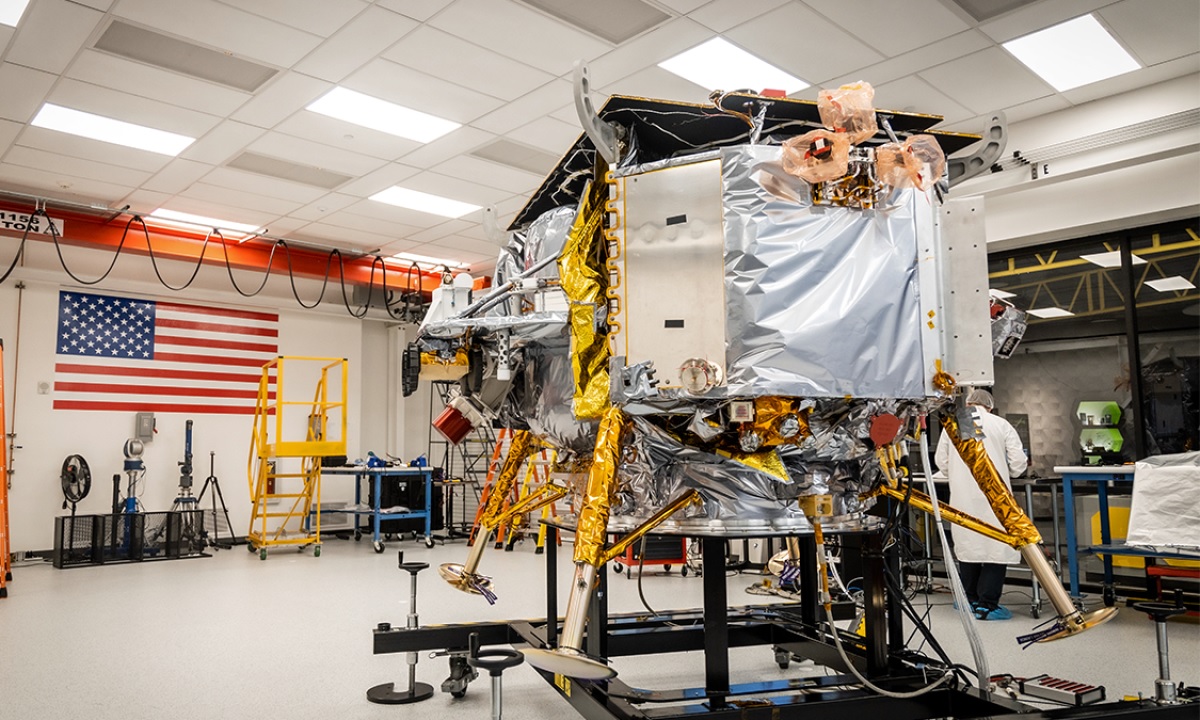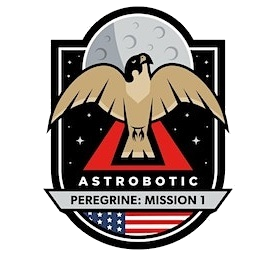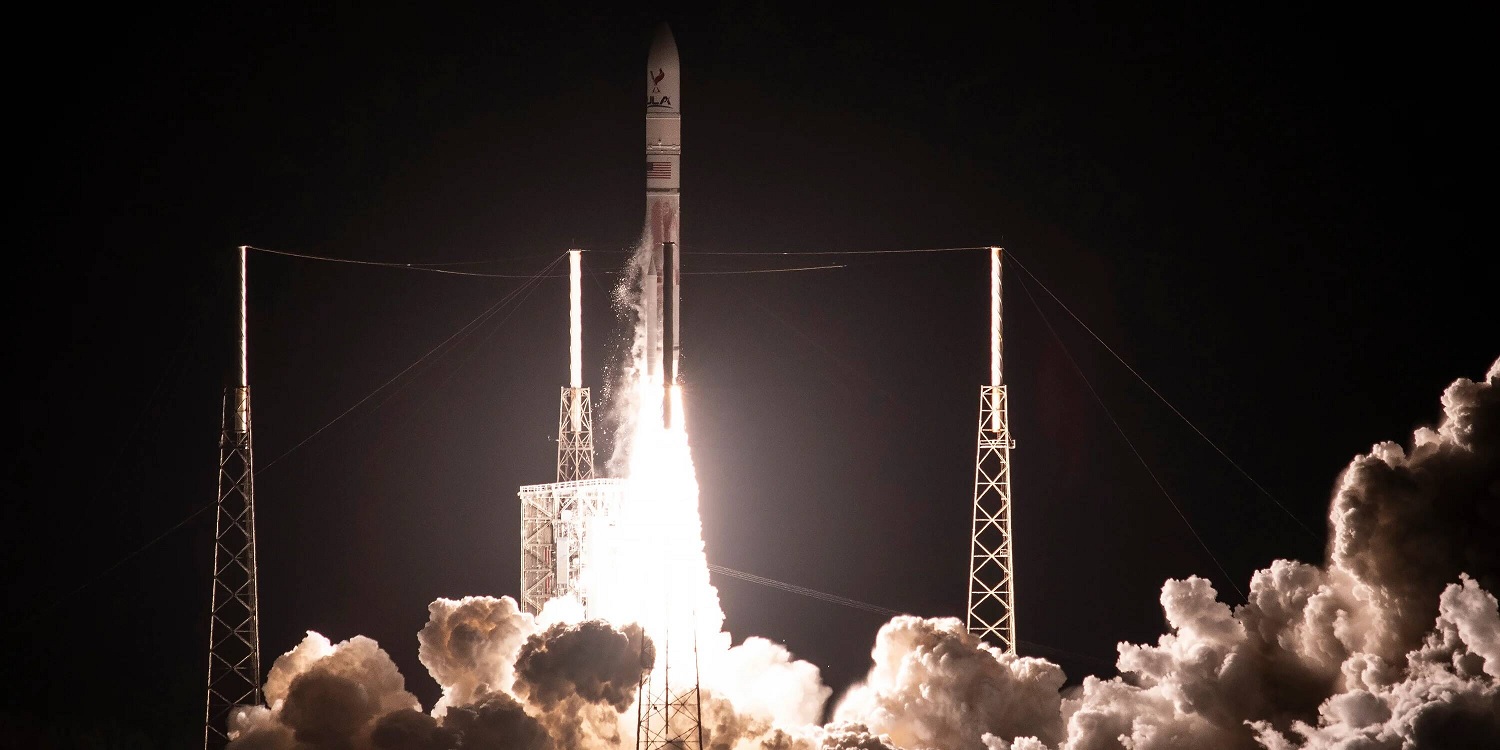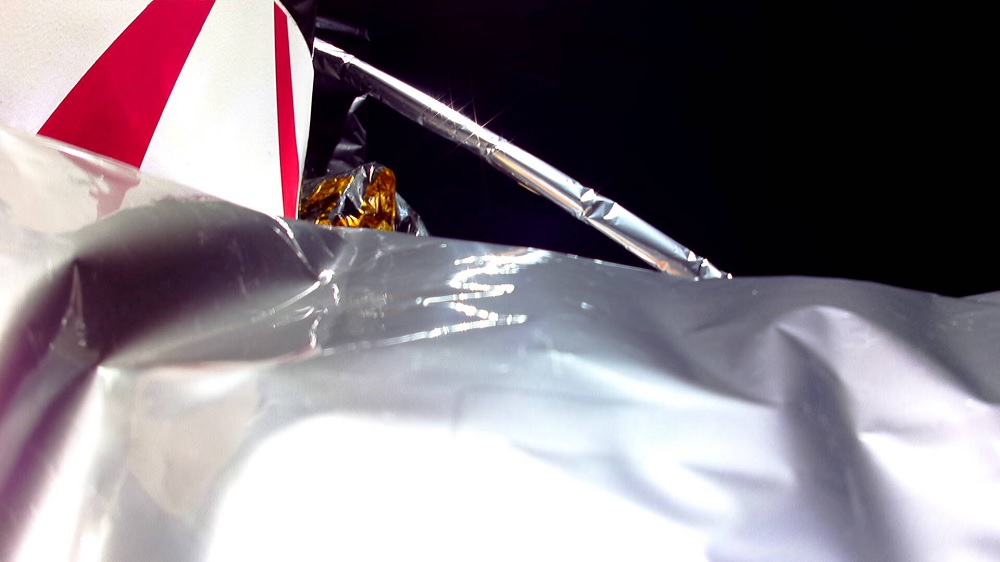Peregrine Mission One was a lunar lander built by the American private space company Astrobotic Technology, that was selected through NASA's Commercial Lunar Payload Services (CLPS). This private lunar lander was launched January 8, 2024 by United Launch Alliance (ULA) aboard a new Vulcan Centaur launch vehicle. The scientific objectives of the mission were to study the lunar exosphere, thermal properties and hydrogen abundance of the lunar regolith, magnetic fields, and the radiation environment. It will also had to test advanced solar arrays. After a 3 to 33 day Earth orbit and cruise to the Moon, followed by a 4 to 25 day lunar orbit phase, the private lunar lander would descend and land in Sinus Viscositatis (Bay of Stickiness) adjacent to the Gruitheisen Domes on the northeast border of Oceanus Procellarum (Ocean of Storms). It was planned to land 55-110 hours after local sunrise and to operate for about 192 hours. The Peregrine Mission One lunar lander also had to bring a small rover to the lunar surface. The rover was called Iris, and was largely the work of students at Carnegie Mellon University, in Pittsburgh. It was about the size of a shoebox, with four wheels each about the size of a small pizza. Iris, also known as 'CubeRover', was a class of planetary rover with a standardized modular format meant to accelerate the pace of space exploration. The idea is equivalent to that of the successful CubeSat format, with standardized off-the-shelf components and architecture to assemble small units that will be all compatible, modular, and inexpensive.
Roughly seven hours after the launch, Astrobotic reported that a problem, likely with the propulsion system, had "prevented the lander from achieving a stable sun-pointing orientation. The company conducted an unplanned maneuver of the spacecraft to turn the solar panels toward the Sun, and, after an expected communications blackout, confirmed that the spacecraft was once again generating sufficient power. Later, Astrobotic confirmed that Peregrine could no longer land on the Moon, although it could continue to operate as a spacecraft. Photographs taken by the spacecraft showed damage to external insulation. Four days into the mission, the propellant leak appeared to slow, and Astrobotic reported that "there is growing optimism that Peregrine could survive much longer" than was previously anticipated. Two days later, Astrobotic decided to direct the spacecraft to burn up in Earth's atmosphere to avoid space debris. A controlled re-entry took place at on 18 January EST (20:59 UTC), with possible impact somewhere near Point Nemo, a spacecraft cemetery in the South Pacific.
Lunar lander info
| Nation: | USA |
| Company/operator: | Astrobotic Technology |
| Mass: | 1,280 kg / 2,820 lb |
| Dimensions: | 2,5 m x 2 m |
| Payload mass: | 90 kg / 198 lb |
| Instruments & payloads: |
|
| Lunar rovers: |
|
| Launch vehicles: | Vulcan Centaur |
| Launch date: | January 8, 2024 |
| Website: | https://www.astrobotic.com |

Launch video
Peregrine Mission One launch overview
| Date launch | Rocket | Launch base | Orbit | Payload | Patch | Mission succes? |
|---|---|---|---|---|---|---|
| 8 January 2024 | Vulcan Centaur | Cape Canaveral (USA) | Trans-Lunar Injection | Peregrine Mission One |  |
Success |
Photos


Images: Astrobotic Technology / ULA

